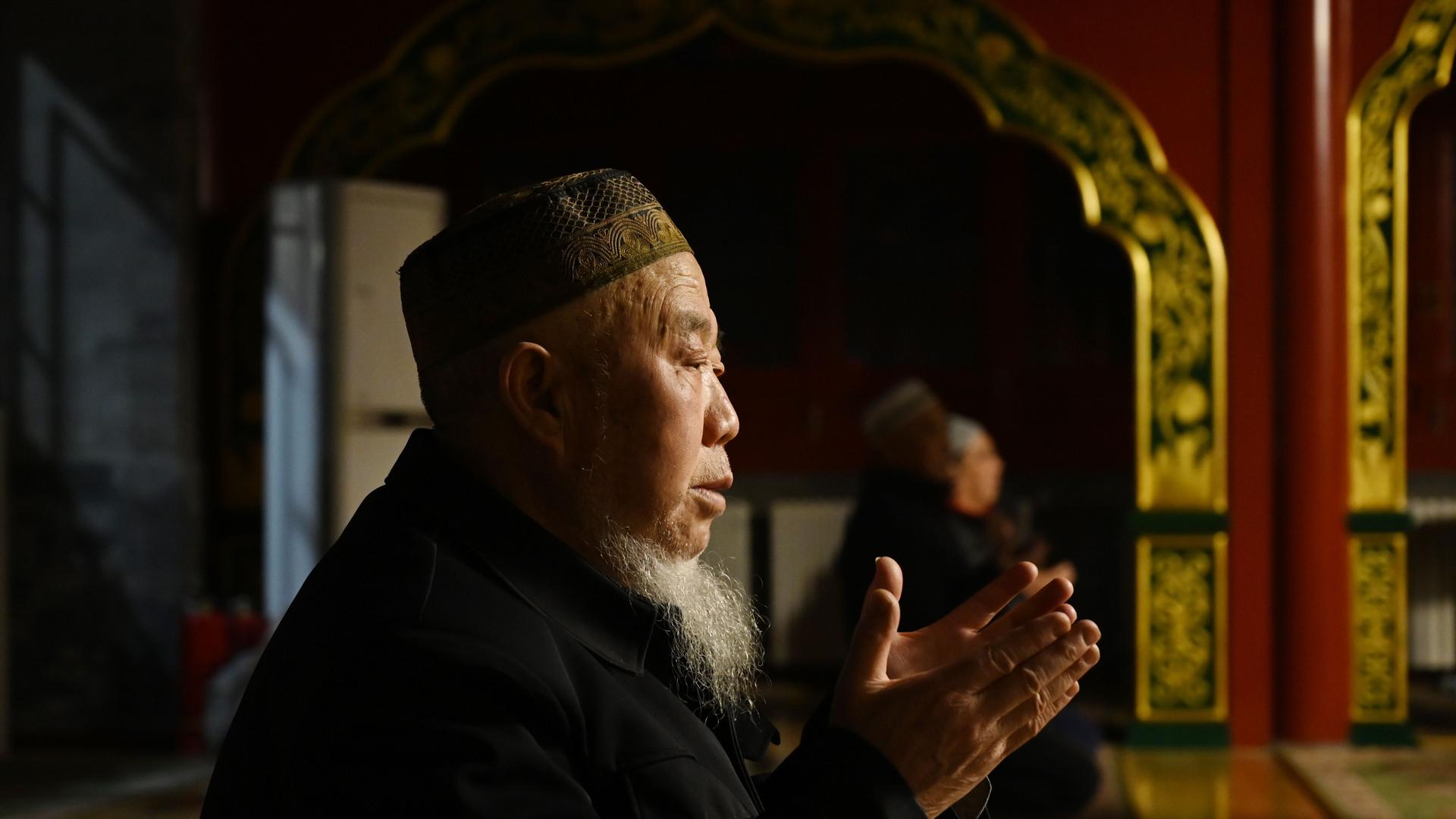Islam’s history in China is nearly as old as the religion itself, but it is still treated as ‘foreign’ in the country.
Zhēn zhǔ can be roughly translated as “Allah” – though Chinese Muslims throughout history have struggled to find a word for “Allah” that was not used very frequently by Chinese speakers – both to avoid confusion with other concepts and give it a sense of exclusivity reserved for the Divine. These Muslims used both Chinese and Islamic ideas to navigate a cultural and political landscape to build and maintain their presence and identification.
But this rich tapestry of religious and cultural exchange and growth is being denied its rightful place in history. The faith has been present for over 1300 years in China: the Tang Emperor Gaozong gave official authorisation to allow Muslims to practice in the city of Xian, in the Shaanxi Province, in 651 AD (the Prophet Muhammad died in 632 AD).
The Communist Party of China (CPC) maintains that Muslims are being put into “reeducation camps” so that they can learn Mandarin and Chinese laws, and prevent them from becoming influenced by Islamic ideas, which are “extremist” and “foreign.”
Despite centuries of existence and intermarriage with Han Chinese and acceptance of local language and culture, Muslims in China are consistently seen as a community of foreign ancestry. This ethos also facilitates the Party’s goal to assimilate ethno-religious groups and relations in the country. However, from a historical perspective, it is hardly evident that Islam is “foreign.”
With a palpable sense of stupor, the Chinese government has made a claim that may prompt more bewilderment than it does anger on the part of Muslims, not because it puts them on the defensive, but because they may not know how to respond at all.
The CPC’s assimilation program is not limited to Islam alone, as Christians – who have also existed in China for centuries – face discrimination and repression. Last December, police in the city of Chengdu shut down a church, confiscated Bibles, and detained the church’s pastor on charges of “inciting subversion.” Local governments around the country have closed down hundreds of churches. One church was even banned from Beijing because its pastor declined to install CCTV. Yet, while Christianity generally escapes the pejorative label of “extremist ideology” in China, Islam does not.
Falun Gong, a ‘spiritual discipline’ that preaches the virtues of truth, benevolence and forbearance, has been banned in China since 1999 and labelled an ‘evil cult’. The founder of Falun Gong, Li Hongzhi claims that his teachings are a ‘centuries-old tradition’. It no longer exists in China in any official capacity.
Now, back to Islam in China. A cursory glance at confessional history in China reveals a world of Islamic scholarship and literature that even the average, educated Muslim might associate more with India or Khorasan than she would with China. And it is to their immense and protracted moral discredit that Muslims especially (let alone the Chinese government) lack the awareness and depth of Islam in a region that is home to more adherents of the faith than the populations of Palestine, Lebanon, and Jordan combined.
Though these Muslims were able to acclimate themselves culturally, they were still given the status of wushi fanke, or fifth-generation foreigners, mainly because most Muslim immigrants were merchants, and Confucian social hierarchy placed them at the bottom of the ladder. During the Song dynasty, there was a steady migration of Muslims into China, and the Tang wushi fanke continued to amass wealth and gain political power.
Under Mongol rule (1279-1368), Muslim administrators from Islamic parts of the empire were brought to China and became pivotal to its growth. Muslims grew in size and wealth. But because they existed primarily outside of mainstream Han Chinese society, they continued to be viewed with mistrust.
The Ming dynasty (1368-1644) restored native rule to China, and many of the early rulers, suspicious of Mongols in China, exiled them to the other side of the Great Wall. However, Muslims were allowed to stay – along with other communities that served as Mongol administrators. But native fears grew to new heights because Muslims were seen as collaborators with the Mongols.
To douse these tensions, Ming rulers enacted policies to expedite the “civilisation” of “barbarian” communities. The assimilative thrust of these policies sped up the adoption of Chinese language and cultural material for Muslims.
But later Ming emperors like Yongle (1402-1424) were more outward-looking. Yongle commissioned the famous Muslim general Zheng He (1371-1433) to make seven sea voyages to expand trade and contact with the known world.
Chinese ethnocentrism during this period largely cut off Muslims from contact with other parts of the Islamic world, and as a result, many assimilated Muslims pursued a Classical Confucian education by the sixteenth century.
Liturgical uses of Arabic aside, many of these Muslims grew up speaking only Chinese. Eventually, a concern among some Muslims about the erosion of Islamic practices and values led them to formulate what would eventually become the Han Kitab – a Chinese-Islamic canon of sorts.
The Han Kitab texts included works like Tianfang dianli, by Liu Zhi (ca. 1660-ca. 1730), a Nanking-based scholar of the Qing Dynasty. Injecting Confucian thought into their formulation of Islam, literati like Liu Zhu also sought to gain acceptance in broader Chinese life.
Liu Zhi, like many Chinese Jewish and Christian apologists before him, saw a powerful connection between the Islamic (and broadly Abrahamic) idea of the prophet and the Chinese figure of the sheng (sage).
Muslims since the Qing era have only grown in size, and are anything but outsiders to Chinese culture and history. Their history compels us to ask, how long does one have to exist in a geographic space to be considered native? If 1300 years is not enough, then what is?
Author: Shahrukh Khan
Shahrukh Khan is a JD candidate at Emory University School of Law.
Source










Discussion about this post